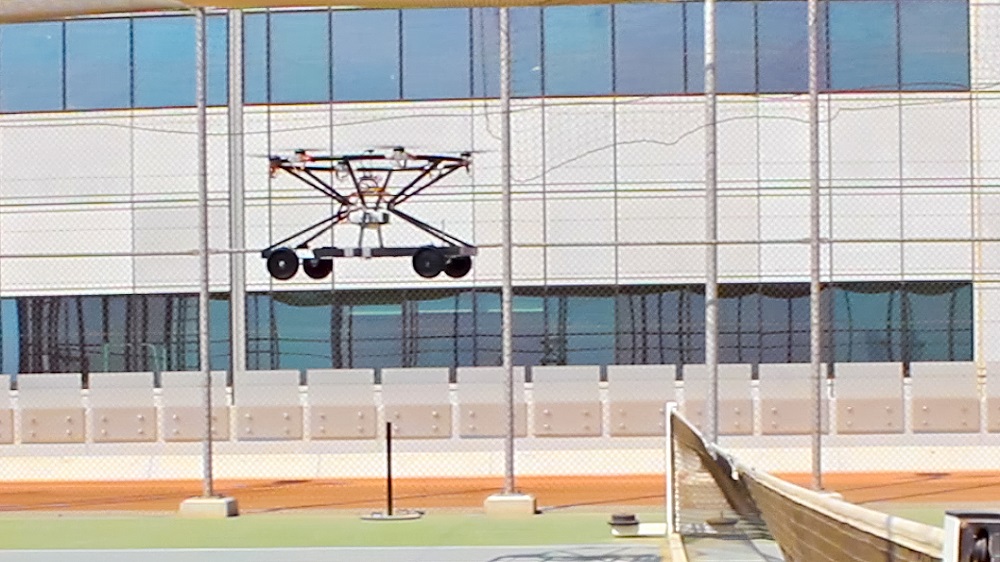
Vertical take-off and landing aircraft, better known as flying cars, could be the future of the transport sector by enabling aerial travel services.
Read Arabic story here.
A classic in the realm of science fiction and the childhood dreams of many, flying cars continue to delight and challenge engineers around the world as the idea increasingly moves toward reality. Now, a team of four Emirati undergraduate students has designed, built and implemented a fully electric flying car prototype amidst all the difficulties and obstacles of the Covid-19 pandemic. The work was presented for their KU Senior Design Project.
View this post on Instagram
Muneera Alhammadi from the Electrical Engineering and Computer Science Department worked with Mahra Alblooshi and Khoulood Nabeel from the Mechanical Engineering Department and Omran Alhammadi from the Aerospace Engineering Department under the supervision of Dr. Reyad El Khazali, Dr. Bashar El Khasawneh, and Dr. Ashraf Al Khateeb.
The transportation sector is faced with the challenge of meeting growing demand for convenient passenger mobility while reducing congestion and improving safety. While autonomous vehicles and electric cars may contribute to these goals, they cannot ease the congestion on existing roadways. Vertical take-off and landing aircraft, better known as flying cars, could overcome these limitations by enabling aerial travel services.
“The flying car idea started in January 2020,” explained the team. “Our main focus was to design a flying car that can take off and land vertically, which gives the driver the ability to smoothly transition between cruising and flying without a runway. We also wanted it to be fully electric to cut back on carbon emissions.”
A practical flying car must be capable of safe, reliable and environmentally-friendly operation both on public roads and in the air.
“We went through multiple phases, from researching to building and fabricating the small-scale prototype, to stability testing,” explained the team. “The stability tests were done to ensure stable maneuvering and flying.”
The team’s prototype is a remotely controlled electric flying car that combines an electric car with a hex-copter drone. It uses GPS as a navigation system and can fly for 18 minutes. While a long way from an actual flying car, the prototype demonstrates the students’ understanding of the key design concepts behind such a vehicle.
“The hex-copter is characterized by its six rotor arms. This provides a more stable flight and more power compared to quadcopters, which have four rotors, and octocopters, with eight rotors. It is more precisely controllable and has a higher payload, perfect for transporting people through the air.
“This project represents the nuclei of the future of real flying cars developed and made in the United Arab Emirates,” said the team.
Jade Sterling
Science Writer
9 February 2021






